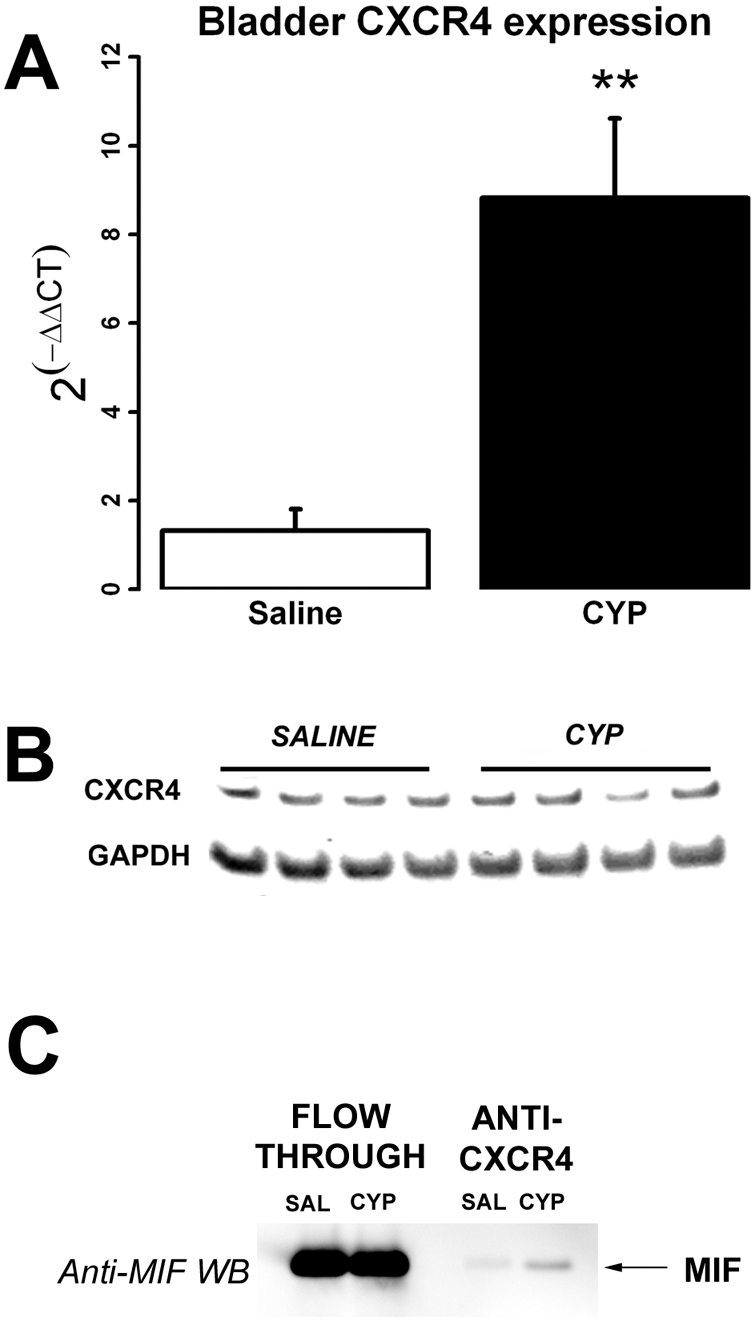Figure 5.

A) Real-time RT-PCR showed significant upregulation of bladder CXCR4 by CYP treatment (p = 0.004) compared to saline. B) CXCR4 Western-blotting showed no difference in CXCR4 amounts between saline and CYP-treated rats. GAPDH was used a loading control. C) Co-immunoprecipitation studies showed CXCR4-MIF associations in the bladder. A representative experiment is shown where MIF western-blotting of fractions from bladders of saline and CYP-treated rats were collected from the CXCR4 antibody column. CXCR4 antisera was used to “pull-down” CXCR4 complexes in bladder homogenates followed by MIF Western-blotting to detect CXCR4-MIF complexes. “Flow through” refers to fractions that did not adhere to the CXCR4 antibody column (and thus do not contain CXCR4-complexes), whereas “Anti-CXCR4” refers to fractions eluted from the CXCR4 antibody column (thus containing CXCR4 complexes). Most of the bladder MIF did not stick to the CXCR4 antibody column (“Flow-through”) and is not associated with CXCR4. However, a small amount was found co-immunoprecipitated with CXCR4 in saline-treated rats and these CXCR4-MIF complexes increased after CYP treatment (arrow). Densitometric analysis showed an increase of 3.5 fold in CXCR4-MIF complexes in CYP treated rats compared to saline controls.
